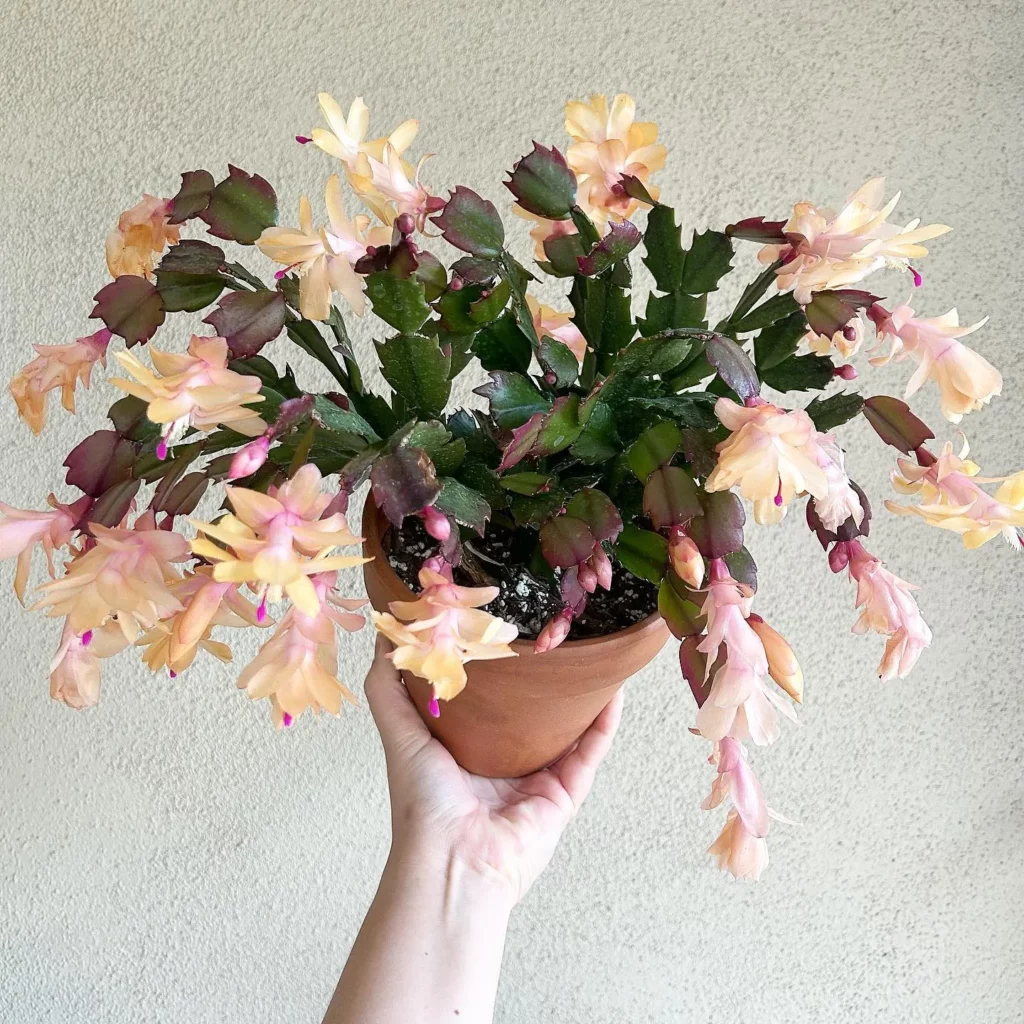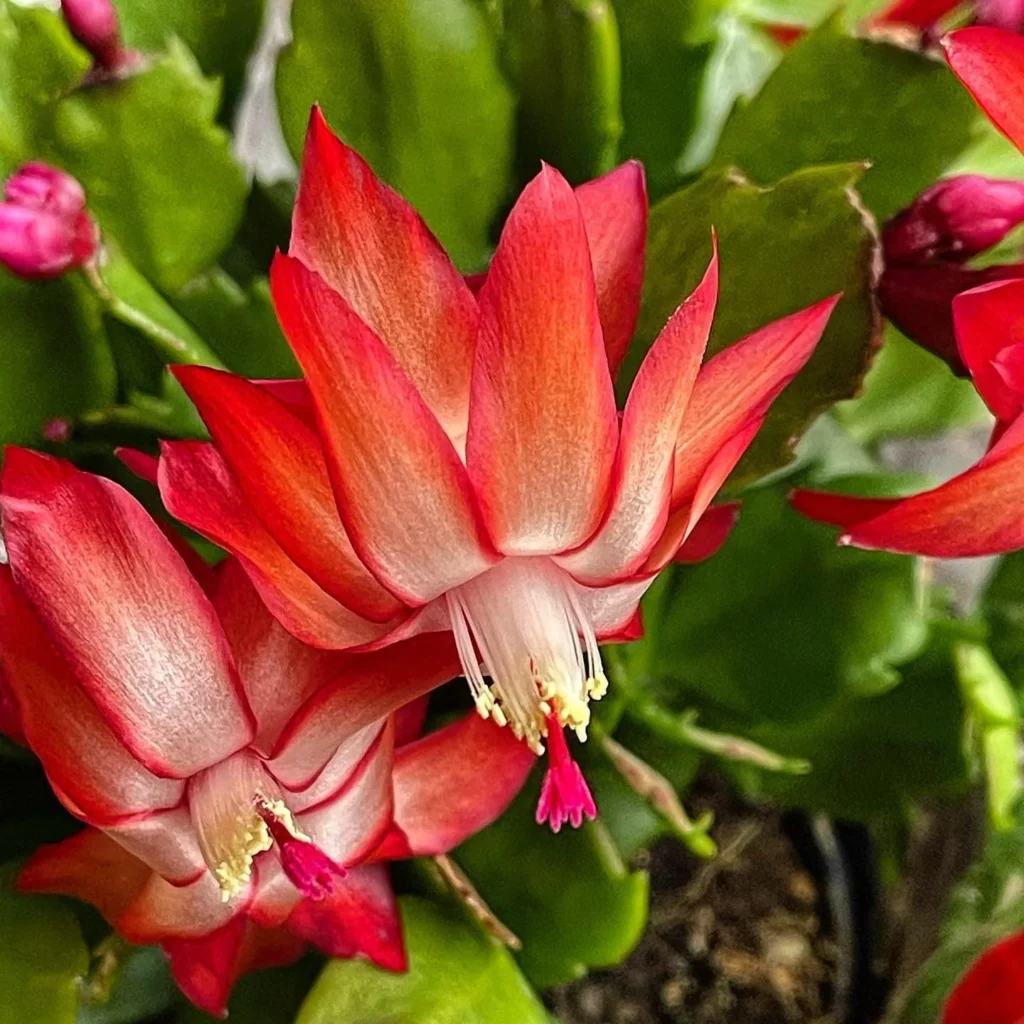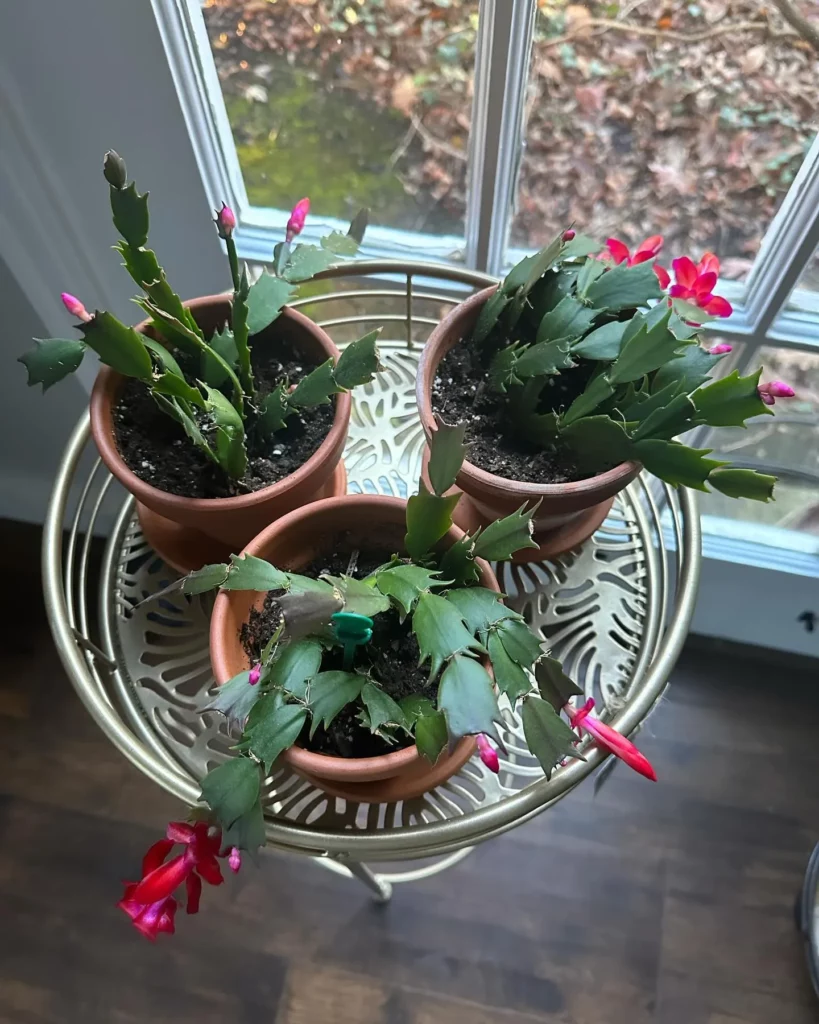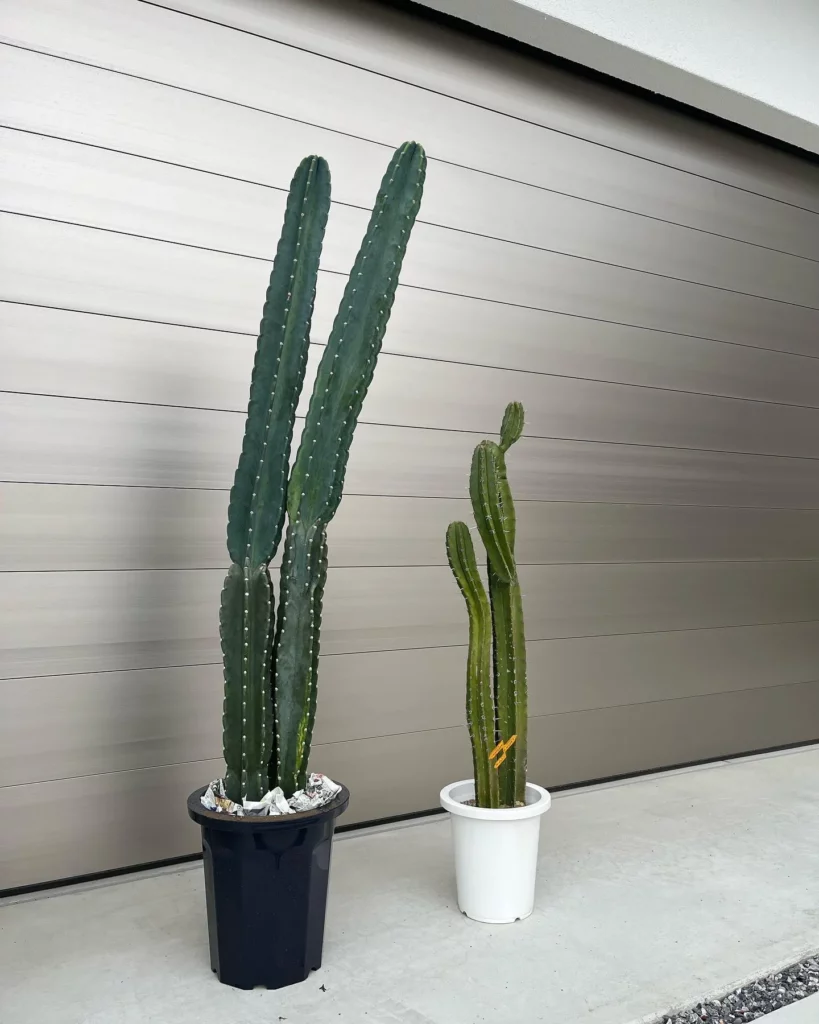Choosing the right soil for your Christmas cactus is crucial for its overall health and vibrant blooms. In this article, we will explore the best options for Christmas cactus soil, including top choices and DIY solutions. We will also discuss the natural habitat of Christmas cactus and the importance of good drainage for these plants.
Key Takeaways:
- Christmas cacti need well-draining soil to prevent waterlogging and root rot.
- Regular potting soil may hold too much water and not provide sufficient drainage.
- Repotting, proper watering, and providing the right environment are essential for the success of your Christmas cactus.
No products found.
The Natural Habitat of Christmas Cactus



The Christmas cactus, scientifically known as Schlumbergera x buckleyi, belongs to the Schlumbergera genus. This genus consists of seven species of epiphytic cacti that are native to Brazil.
Unlike their desert-dwelling relatives, Christmas cacti grow on tree branches or shrubs in their natural habitat. This preference for living on elevated surfaces indicates their need for good drainage and a well-aerated environment. Natural habitats with proper drainage allow these cacti to thrive and maintain their health and beauty.
Understanding the Soil Needs of Christmas Cactus



Due to their epiphytic nature, Christmas cacti have specific soil needs that must be met to ensure their health and vitality. These plants thrive in well-draining soil that prevents waterlogging and root rot.
Regular potting soil from the bag often holds too much water, making it unsuitable for Christmas cacti. To provide the ideal soil conditions, you need a soil mix that strikes a balance between moisture retention and oxygen availability.
The bottom line: Christmas cacti require soil that retains some moisture to keep their roots hydrated, but it should also allow excess water to drain freely. This ensures sufficient moisture retention while preventing water from pooling around the roots, which can lead to rot. When the soil drains well, the plant’s roots receive the necessary oxygen for healthy growth. Good oxygen availability prevents suffocation of the roots and promotes overall plant vigor.
Top Choices for Christmas Cactus Soil
When it comes to the best soil options for your Christmas cactus, you have a few top choices that will ensure healthy growth and beautiful blooms. Let’s explore these options:
No products found.
DIY Blend with Pumice: If you prefer a DIY approach, consider creating a soil blend with pumice. Pumice is a lightweight volcanic rock that helps create a well-drained soil mix, similar to the natural habitat of your Christmas cactus. Simply mix two parts of a cactus/succulent mix with one part of 1/4″ horticultural pumice for the perfect soil consistency.
DIY Blend Using Orchid Bark and Perlite: Another great DIY option is a blend using orchid bark and perlite. This mixture provides optimal drainage while retaining enough moisture for your Christmas cactus. To create this blend, combine equal parts all-purpose potting mix, perlite, and orchid bark. It’s a cost-effective solution that allows you to customize the soil mix to your cactus’s needs.

Dealing with Common Christmas Cactus Problems
While Christmas cacti are generally resilient plants, they can sometimes encounter common problems that require attention. Here are some issues you may face with your Christmas cactus:
- Blooms dropping off before opening
- Wilted leaves
- Leaf discoloration
- Black and slimy areas
- Woody or corky base
These problems can arise due to various factors, including sudden changes in light exposure, drafts, fluctuations in moisture levels, fungal or bacterial diseases, and natural aging of the plant.
To address these issues and ensure the health of your Christmas cactus, it’s important to take appropriate measures. Consider adjusting the light and temperature conditions to provide a stable environment for your plant. Improving your watering practices, such as avoiding overwatering or waterlogging, can help prevent leaf wilt and black and slimy areas. Additionally, it’s crucial to monitor your plant for signs of fungal or bacterial diseases, and take prompt action if necessary.
Conclusion
With the right soil and proper care, your Christmas cactus will thrive and reward you with stunning blooms during the holiday season. Remember to water and feed your Christmas cactus appropriately, provide the right light and temperature conditions, and consider pruning and propagating when necessary.
FAQ
What is the best soil for a Christmas cactus?
The best soil for a Christmas cactus is one that is well-draining and allows excess water to drain freely. Regular potting soil often holds too much water, so it is recommended to use a soil mix specifically designed for tropical succulents or create a DIY blend with pumice or a mix of all-purpose potting mix, perlite, and orchid bark.
What is the natural habitat of a Christmas cactus?
Christmas cacti are native to Brazil and are part of the Schlumbergera genus. They are epiphytic cacti that grow on tree branches or shrubs, indicating their preference for excellent drainage.
Why is good drainage important for a Christmas cactus?
Good drainage is important for a Christmas cactus because it prevents waterlogging and root rot. Christmas cacti require soil with excellent drainage due to their epiphytic nature, even though they are not desert cacti. Well-draining soil ensures proper moisture retention for the plant’s roots while also providing sufficient oxygen for healthy growth.
What are the top choices for Christmas cactus soil?
One top choice for Christmas cactus soil is the Tropical Succulent Soil Blend from Oh Happy Plants, which is specifically designed for tropical succulents like Christmas cacti. Another option is a DIY blend with pumice, which helps create a well-drained soil mix. You can also make your own DIY blend using equal parts all-purpose potting mix, perlite, and orchid bark.
What are the benefits of the Tropical Succulent Soil Blend?
The Tropical Succulent Soil Blend from Oh Happy Plants offers several benefits for Christmas cacti. It uses sustainable ingredients like coco coir and coco chips instead of peat moss, and its bags and labels are compostable. The blend also includes real ingredients like alfalfa meal, flax seed meal, and rock dust for a slow release of nutrients. Additionally, it contains a mycorrhizal inoculant for improved plant health and disease resistance, as well as charcoal to create a healthy environment for the root ball of the cactus.
How can I create a DIY blend with pumice for Christmas cactus soil?
To create a DIY blend with pumice, combine two parts of a cactus/succulent mix with one part of 1/4″ horticultural pumice. The pumice helps create a well-drained soil that mimics the Christmas cactus’s natural habitat. It is important to use pumice of uniform size and quality to ensure proper drainage and aeration for the plant’s roots.
Can I make my own DIY blend for Christmas cactus soil?
Yes, you can make your own DIY blend using equal parts all-purpose potting mix, perlite, and orchid bark. This blend results in a sharply draining mix with plenty of oxygen for the plant’s roots. Keep in mind that the chunkier the potting mix, the more quickly the Christmas cactus will dry out, so you may need to water it more frequently.
When is the best time to repot a Christmas cactus?
The best time to repot a Christmas cactus is during the growing season after the blooming period is over. Late winter or early spring is an ideal time for repotting. When choosing a new pot, opt for one that is just one size larger than the current pot to avoid excessive soil and longer drying times. Clay pots, such as terra cotta pots, can be a good choice as they dry out more quickly, providing better aeration for the roots.
How often should I water my Christmas cactus?
Christmas cacti prefer to be watered when the top inch of soil has dried out. This helps prevent overwatering and root rot. Using a potting mix with good drainage ensures that excess water can easily escape. It is also recommended to feed your Christmas cactus with a slow-release succulent plant food to provide the necessary nutrients for healthy growth and abundant blooms.
How can I encourage blooms in my Christmas cactus?
To encourage blooms in your Christmas cactus, you need to mimic their natural environment. Provide your cactus with 6 weeks of short days (13 to 16 hours of total darkness) and low temperatures. After this period, gradually increase the temperature and expose the cactus to more light. Once you see flower buds forming, move the cactus to its desired location for the holiday season.
How should I prune my Christmas cactus?
To maintain a full and bushy appearance, prune your Christmas cactus by removing 2 or 3 stem sections per branch after flowering. This will encourage branching and new growth. You can also propagate your Christmas cactus by rooting cuttings. Dip the cuttings in a rooting hormone and plant them in a moist potting mix. After a few weeks, the cuttings should develop roots and can be potted individually.
What are common problems faced by Christmas cacti?
Common problems faced by Christmas cacti include blooms dropping off before opening, wilted leaves, leaf discoloration, black and slimy areas, and a woody or corky base. These issues can be caused by factors such as sudden changes in light, drafts, moisture fluctuations, fungal or bacterial diseases, and natural aging. Taking appropriate measures, such as adjusting light and temperature conditions, improving watering practices, and monitoring for signs of disease, can help address these problems.





